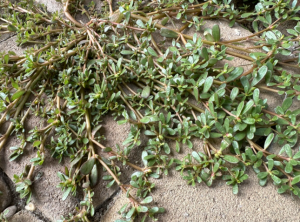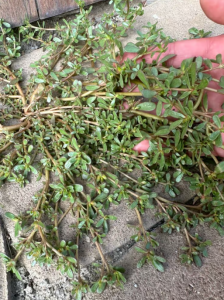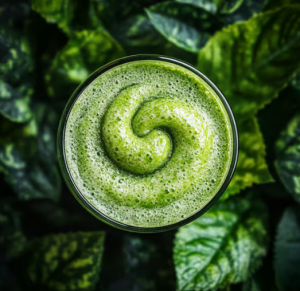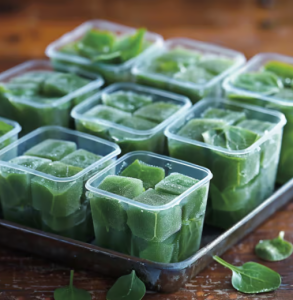
Purslane: A Nutrient-Rich Plant with Numerous Benefits (1000 Words)
Purslane (Portulaca oleracea), often dismissed as a common garden weed, is actually a nutritional powerhouse with a long history of culinary and medicinal use. This succulent, low-growing plant thrives in a variety of climates and soils, and can be found growing wild in gardens, fields, and even sidewalk cracks. But don’t let its humble appearance fool you—purslane is packed with essential nutrients and health-promoting properties that make it worthy of a place on your plate and in your garden.
A Brief History and Botanical Background
Purslane is believed to have originated in the Middle East and India, but its use spans the globe. The ancient Egyptians, Greeks, and Romans appreciated its medicinal properties. In fact, Greek physician Hippocrates and Roman naturalist Pliny the Elder both wrote about its healing abilities. The plant spread through trade and agriculture and now grows on every continent except Antarctica.
Botanically, purslane belongs to the Portulacaceae family. It is characterized by its thick, fleshy leaves, reddish stems, and small yellow flowers. It typically grows in a rosette formation and can spread quickly, making it a common sight in untended areas. It is both heat- and drought-tolerant, making it ideal for regions with poor water access.
Nutritional Profile: A Surprising Superfood
Purslane boasts an exceptional nutritional profile that rivals and even surpasses many cultivated vegetables. It is low in calories yet dense in essential vitamins, minerals, and beneficial compounds.
Here are some of the key nutrients found in purslane:
-
Omega-3 Fatty Acids: Purslane contains alpha-linolenic acid (ALA), a plant-based omega-3 fatty acid that is rare in green leafy vegetables. It has one of the highest known concentrations of omega-3s among terrestrial plants.
-
Vitamins: It is rich in vitamins A (as beta-carotene), C, E, and several B-complex vitamins including riboflavin, niacin, and pyridoxine.
-
Minerals: Purslane is a good source of calcium, magnesium, potassium, iron, and manganese.
-
Antioxidants: It contains powerful antioxidants like glutathione, betalain pigments, melatonin, and dopamine, which help fight oxidative stress.
-
Fiber: It is high in mucilaginous fiber, aiding digestion and gut health.
This nutritional richness makes purslane a true superfood—especially beneficial for individuals following vegetarian or vegan diets who may lack omega-3 fatty acids.
Health Benefits of Purslane
1. Heart Health
The omega-3 fatty acids in purslane, particularly ALA, play a critical role in cardiovascular health. Omega-3s help reduce inflammation, lower LDL (bad) cholesterol, and reduce blood pressure—all factors that can reduce the risk of heart disease. The high potassium content further contributes by relaxing blood vessels and improving blood circulation.
2. Anti-Inflammatory and Antioxidant Effects
Purslane’s antioxidants combat free radicals that contribute to chronic inflammation and aging. Betalains, for example, are pigments with powerful antioxidant properties that may help protect cells from damage and reduce inflammation in conditions like arthritis, asthma, and certain skin diseases.
3. Weight Management
Low in calories and high in fiber, purslane can help promote satiety and reduce overall calorie intake. Its mucilaginous fiber slows down digestion, helps regulate blood sugar levels, and supports a healthy metabolism.
4. Eye and Skin Health
The vitamin A and beta-carotene in purslane support healthy vision and protect against conditions like macular degeneration and cataracts. Vitamin A also contributes to healthy skin by promoting cell regeneration and preventing dryness and acne.
5. Digestive Health
Purslane’s fiber content aids in digestion and helps prevent constipation. The plant’s mucilage—a sticky, gel-like substance—can soothe the digestive tract and reduce irritation, making it helpful for those with conditions like ulcers or irritable bowel syndrome (IBS).
6. Bone Strength
Rich in calcium, magnesium, and vitamin K, purslane supports bone mineralization and density. These minerals work together to strengthen bones and prevent osteoporosis, especially in older adults.
7. Blood Sugar Regulation
Preliminary studies suggest that purslane may help lower blood sugar levels, making it beneficial for individuals with type 2 diabetes or insulin resistance. Its soluble fiber helps slow glucose absorption and regulate insulin response.
8. Mental Well-Being
Interestingly, purslane contains trace amounts of dopamine and melatonin. Dopamine is a neurotransmitter associated with pleasure and motivation, while melatonin regulates sleep cycles. While the quantities in purslane are small, regular consumption may still offer subtle mood and sleep benefits.
Culinary Uses
Purslane has a slightly tangy, lemony flavor with a crisp texture, making it a versatile ingredient in the kitchen. It can be eaten raw, cooked, or pickled. Here are some ideas:
-
Salads: Add raw purslane leaves and stems to mixed greens for a refreshing crunch.
-
Stir-Fries: Lightly sauté purslane with garlic and onions for a nutrient-packed side dish.
-
Soups and Stews: Add it to soups toward the end of cooking to retain its texture and flavor.
-
Omelets and Scrambles: Mix chopped purslane into eggs for a nutritious breakfast.
-
Pickled: Purslane can be pickled with vinegar, garlic, and spices for a tangy, probiotic-rich snack.
In Mexican cuisine, purslane is known as verdolaga and is commonly used in pork dishes and tacos. In Middle Eastern countries, it’s added to yogurt-based dips and salads.
Growing Your Own Purslane
Purslane is remarkably easy to grow, even for novice gardeners. It thrives in full sun, needs little water, and can be grown in containers or directly in the ground. Here’s how to grow it:
-
Soil: Prefers well-draining, sandy soil but is very adaptable.
-
Water: Water sparingly once established.
-
Propagation: Sow seeds directly or take cuttings. It self-seeds prolifically.
-
Harvest: Clip the stems and leaves as needed. The more you harvest, the more it grows.
You can also forage purslane, but be sure it’s not from areas sprayed with pesticides or contaminated by heavy metals, such as roadsides or industrial zones.
Cautions and Considerations
While purslane is safe for most people, there are a few things to note:
-
Oxalates: Like spinach and beet greens, purslane contains oxalates, which can interfere with calcium absorption and may contribute to kidney stone formation in susceptible individuals. Those with kidney disorders or prone to stones should consume it in moderation.
-
Pesticides: If foraging, avoid areas treated with chemicals. Wash thoroughly before consumption.
-
Allergies: Rare, but allergic reactions are possible. Try a small amount first if it’s new to your diet.
Final Thoughts
Purslane, once overlooked as an invasive weed, deserves its rightful place in the spotlight as a nutritious and delicious superfood. Its rich supply of omega-3 fatty acids, antioxidants, vitamins, and minerals make it a valuable addition to a healthy diet. Whether you grow it in your garden or forage it in the wild, purslane offers an easy, sustainable way to boost your nutrition naturally.
With growing interest in plant-based diets and food sustainability, purslane’s time has come. It’s not just a weed—it’s a gift from nature, hiding in plain sight.
